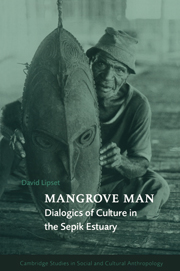Book contents
- Frontmatter
- Contents
- List of illustrations
- List of tables
- Acknowledgments
- 1 Introduction
- PART I DIALOGICS OF THE MATERNAL SCHEMA AND THE UTERINE BODY
- 2 A predicament in space
- 3 The maternal schema and the uterine body
- 4 The heraldic body
- 5 Who succeeded Ginau?
- PART II DIALOGICS OF THE MATERNAL SCHEMA AND THE COSMIC BODY OF MAN
- PART III DIALOGICS OF THE MATERNAL SCHEMA IN SOCIAL CONTROL
- Glossary
- Notes
- References
- Index
- Cambridge Studies in Social and Cultural Anthropology
5 - Who succeeded Ginau?
Published online by Cambridge University Press: 05 June 2012
- Frontmatter
- Contents
- List of illustrations
- List of tables
- Acknowledgments
- 1 Introduction
- PART I DIALOGICS OF THE MATERNAL SCHEMA AND THE UTERINE BODY
- 2 A predicament in space
- 3 The maternal schema and the uterine body
- 4 The heraldic body
- 5 Who succeeded Ginau?
- PART II DIALOGICS OF THE MATERNAL SCHEMA AND THE COSMIC BODY OF MAN
- PART III DIALOGICS OF THE MATERNAL SCHEMA IN SOCIAL CONTROL
- Glossary
- Notes
- References
- Index
- Cambridge Studies in Social and Cultural Anthropology
Summary
Having newly arrived in Wewak, the capital of the East Sepik Province in February 1981, Barlow and I went looking to meet urban Murik. Among the first people we encountered was Ginau, a lanky, rather elderly man, with angular features and penetrating eyes. “I am the government of Darapap,” Ginau announced to us in a raspy, somewhat thin voice that seemed worn out. For many years, he told us, he had been the local government councilor in Darapap village as well as one of its leading sumon goans. At that time, however, what we saw was an unkempt man with thick, bootblacked hair, straggling beard, who was dressed in a torn singlet and a threadbare black waistcloth. Black bandanas were neatly wrapped around his ankles and wrists (see Plate 14). He was in mourning, we later found out, for his wife and youngest child, both of whom had died some years earlier; so both the man and his insignia were living in defilement. Ginau was neither grooming himself nor purchasing new clothes; he was forgoing the display of his heraldry. For the past several months, he had been staying with a sister's daughter at Kreer camp, a ramshackle, beachfront community made up of urban Murik and other regional groups, while waiting to go back to the village to celebrate his “Washing Feast” (Arabopera Gar) that would end his mourning taboos.
- Type
- Chapter
- Information
- Mangrove ManDialogics of Culture in the Sepik Estuary, pp. 109 - 132Publisher: Cambridge University PressPrint publication year: 1997

